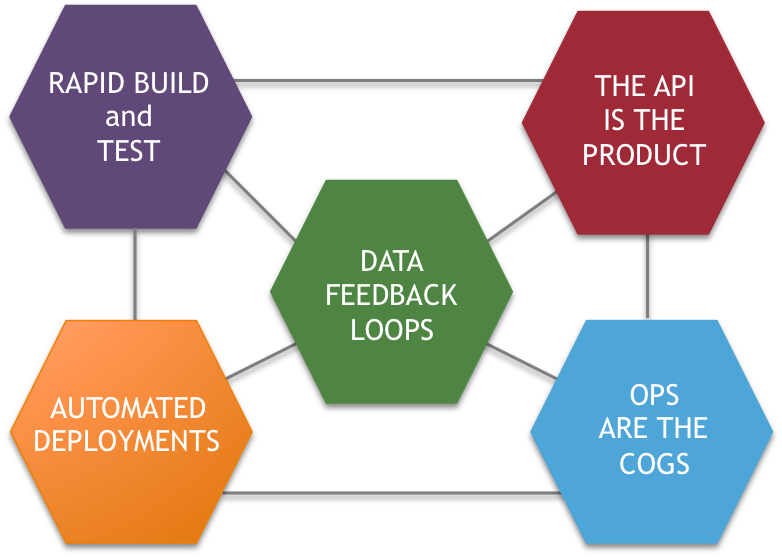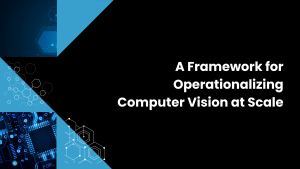Premise: The transition to modern IT actually is a series of transitions, including organizational. IT leaders that seek to modernize a firm’s IT organization must start identifying obstructions to the transition and address them, including vendor relationships.
An IT infrastructure “Iron Triangle” is constraining adoption of modern IT. The triangle is comprised of entrenched IT administrative functions, legacy vendors, and technology-specific automation. Working together, often unwittingly, the IT iron triangle perpetuates outdated processes and sustains bad business habits. As a consequence, our research shows that business and application development decision makers are accelerating adoption of external cloud services, often to avoid IT groups. While employing services like Amazon’s AWS and Microsoft’s Azure often are the right thing to do, digital business strategies are best served if IT organizations successfully modernize by:
- Moving from a technology to a service administration model. Most IT shops are stuck in the transition from managing technology to managing services that provide application and data delivery. The transition will remain stuck until users adopt new disciplines consistent with modern IT, which includes, but is not limited to, practices like DevOps.
- Adopting True Private Cloud to enhance real automation. Replicating the simplicity and ease-of-consuming offered by external cloud platform suppliers won’t be easy, but must be a goal of any IT organization that seeks to serve the application and data needs of its host organization.
- Elevating vendors that don’t force false “platform” decisions. Technology vendors have a long history of “adding value” by renaming and repositioning legacy products under vogue technology marketing umbrellas, but that’s starting to change. Technology evaluations should be made consistent with where the shop wants to be on the service continuum, and not where it is.
Moving From a Technology to a Service Administration Model
When IT technologies each featured huge unit costs and capital expenses, organizing to maximize the productivity of those assets made perfect business sense. Groups responsible for driving the asset productivity of servers, storage, networking resources, and supporting facilities technologies worked to increase utilization, enhance uptime, and adopt technology-specific automation of those assets. Because the bulk of these technologies were supporting employee-facing operational applications, technology roadmaps and plans could be measured in years, driven by slow-changing cycles of finance, HR, and other administrative functions. Moreover, the newness of these technologies encouraged businesses to invest in home-grown expertise at the technology level, to ensure returns on capital invested in technology were achieved.
Today’s digital businesses, however, are placing very different demands on technology infrastructure. First, digital business is highly dependent on a business’s ability to drive the value of data assets; free data — data that is made available for multiple streams of work — is the key asset to digital business, which requires increasingly separation of data from application and technology. Second, business cycle times are accelerating, largely because data moves through markets more easily and alters preferences, demand, and market positions; IT capabilities no longer are serving slower moving administration functions, but highly dynamic engagement functions. Third, the risk/reward equations of IT decisions increasingly dynamic; decision making must become more empirical, iterative, and opportunistic — and technology agnostic. Wikibon’s research shows that a Digital Business Platform (DBP) is required to align digital business strategy, IT management, and technology selection, instituting a services administration approach to conducting the increasingly crucial work of digital business management (see Figure 1).
Figure 1: The Digital Business Platform
Adopting True Private Cloud to Enhance Real Automation
Technology-specific administration groups willingly adopted product-specific automation tools, thousands of which are embedded deeply into IT operations today. From mainframes to first-generation smartphones, these tools provide crucial services to many IT organizations, but only because the plethora of on-premise products would be impossible to manage without them. Generally, these tools engender product-specific administration “habits” which are proving very difficult to break as digital businesses try to transition to more modern IT practices, including Agile development, DevOps, and boundaryless cloud computing. Many IT shops, for example, are forced to settle for hybrid cloud strategies that actually are comprised of true cloud services externally and a hodge-podge of infrastructure comprises internally, not because that’s what the business or application portfolio needs, but because that’s what their on-premise infrastructure vendors offer.
True private cloud offers an alternative, but one that comes with costs. Based on converged or hyper-converged infrastructure, true private cloud solutions mirror the managerial interfaces of externally provided cloud services, but operate on-premise. Moreover, true private cloud provides a degree of plastic infrastructure not possible with alternative on-premise solutions; by plastic Wikibon means that the solutions not only scale, but also take new persistent shapes based on changes in business and application demands, without the need for significant reconfiguration work. Convergence makes common automation possible, but CIOs that seek to enact true private cloud solutions will be especially targeted by entrenched hardware and automation suppliers — as well as by internal groups that potentially could be displaced by a simplified approach to on-premise IT. True private cloud is a direct shot at the heart of the IT iron triangle.
Elevating Vendors That Don’t Force False “Platform” Decisions
Market changes are having dramatic impacts on traditional vendors. First, the rapid adoption of consumer electronics is reshaping the cost curves of a wide variety of base components, especially memory; flash memory, for example, is having a dramatic effect on infrastructure architectures; some vendors are much better positioned than others to take advantage of these changes. Second, the emergence of cloud vendors like Amazon, Microsoft, and others as soup-to-nuts suppliers of IT infrastructure and application services is starting to consolidate buying power; while still nascent, pricing power (e.g., pay-as-you-go) will continue to shift to the buy-side of the IT industry, benefiting cloud players and modern IT shops alike. Third, to avoid being captured by these and other trends, many traditional vendors are expanding efforts to market “platforms” comprising a range of standard components and a combination of proprietary and open source infrastructure software. However, while these platforms typically offer real, targeted benefits, they often are marketed as comprehensive, even closed. A broad spectrum of vendors are offering essentially the same stack of capabilities, but masking similarities with archaic packaging, obscure naming conventions, and complex pricing models.
However, some infrastructure vendors — usually usurpers — are starting to bake DBP capabilities directly into their products. For example, the Pure1 Platform from Pure Storage uses DBP concepts to enable a new model for storage configuration, administration, and service management. Based on common cloud conventions, the platform uses published APIs to facilitate connection, support, and management of Pure’s FlashArray products. Through these APIs, new flash array capacity can be automatically added to a broad range of cloud platforms, reducing test and configuration time. Additionally, Pure Storage can provide high-quality, SaaS-based automation services, diminishing the requirement for a shop to learn and perform specialized monitoring, trouble ticketing, and upgrade tasks. Finally, and crucially, the platform is designed for collaboration within a shop, between the shop and Pure Storage, and within an overall Pure Storage user community, providing a path to optimize knowledge transfer and minimize operations costs. While this is one example, Pure Storage’s Pure1 platform is an early example of a vendor seeking to easily fit into evolving cloud platforms, and not dictate another entrant.



